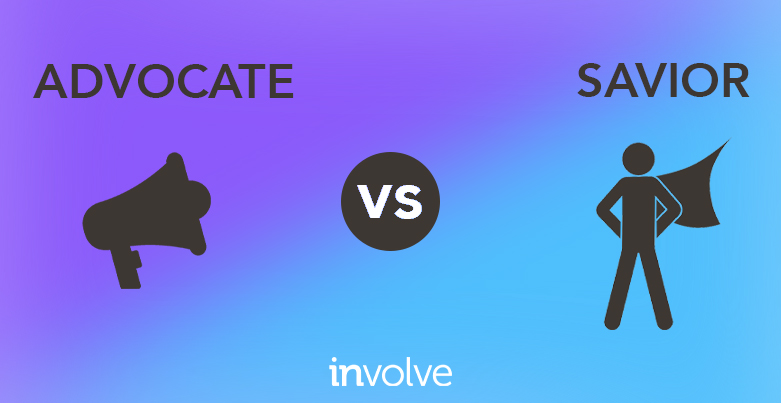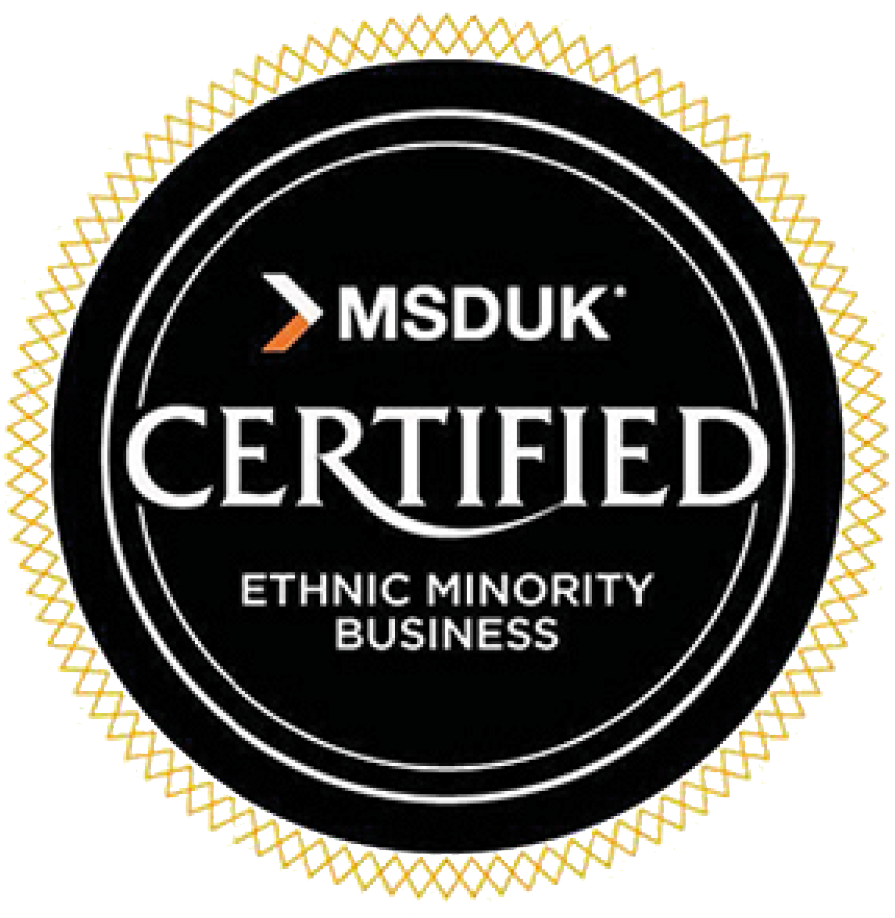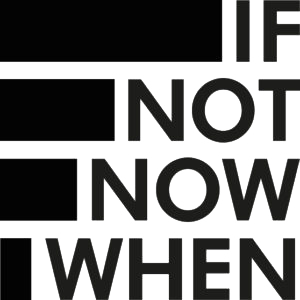INvolve’s Marketing & Communications Manager Neha Vyas, discusses how organizations can avoid becoming saviors and what separates this from active advocacy.
We have all come to value and understand the importance of allyship within business. Active advocates (or ‘allies’ as many businesses call them) are instrumental when it comes to driving change and ensuring that everyone has a fair chance at success and opportunity. Typically, active advocates are those who possess a degree of privilege or have the ability to use their platform and influence to open doors for others who may, systemically, be more likely to struggle or find it harder to reach their goals. Active and committed advocates can support global organizations to tip the scales towards equity.
However, in practice, it can be easy to conflate active advocacy with saviorism. A savior is when someone bypasses advocacy and parachutes into minority communities with the intention to support and uplift but with the resulting impact being that of rescuing or saving. While intentions are noble, impact is key and acting more like a savior rather than an advocate can have detrimental effects on the communities that you initially set out to support. We’ve highlighted some of the key differences between active advocacy and saviorism below to help you strengthen your advocacy and the overall impact of your role as a driver of inclusion with business.
Recognizing when it’s time to listen
A key difference between active advocacy and saviorism is the former relies on advocates recognizing when they should sit back and listen rather than dominate conversations that they don’t fully understand.
Audeliss and INvolve’s If Not Now, When? Campaign for Black inclusion in business advocates for Black employees through implementing, measuring, and reporting on the effectiveness of internal initiatives and strategies across UK businesses. This campaign was created directly in response to the 2020 Black Lives Matter upsurge, and over 80 UK business leaders have now signed up to commit to and be held accountable for change.
A key pillar of this campaign is to elevate Black voices within the business and hold safe spaces to really listen to Black employees and their concerns or ideas for inclusion in business. Without this pillar businesses may likely swoop in and create initiatives and implement strategies that are not inclusive of their Black employees and certainly had not been created with their specific needs in mind due to their lack of input. While conversations need to be driven by senior leadership teams, the content of these conversations should be directly informing the actions taken by leaders within the business.
Knowing when to pass the mic
“Giving a voice to the voiceless” is an adage that we’ve all come to know. However, how accurate is this? We commonly think of and see minority groups as voiceless but history dictates, whether that’s the Stonewall Riots or more recently the Stop Asian Hate Campaign, that minority communities have always been voicing their struggles and have been passionate in their fight for equal rights, safety and inclusion. The issue is not that they are voiceless, it is that they are rarely heard and even less so on a platform that they deserve to have. Simply put, those from minority communities know what they require, and their lived experiences speak volumes, therefore those in power must create the conditions where they can be heard.
An active advocate knows the power of taking a step back and giving platforms to others who may otherwise not have the opportunity. Of course, a platform isn’t always a formal stage and can exist within team meetings, group spaces for conversations and even company strategy days and team-building initiatives. Passing the mic in this instance is a powerful way to recognize that everyone within a team has something valuable to say and offer and deserves to be heard. It’s not a case of providing someone with a voice through speaking for them.
Creating long-lasting and evolving solutions
If a savior is someone that provides a singular and simplistic solution for inclusion without taking the time to understand the complexities and intersectional nature of the global workplace, then an active advocate is one who understands that inclusion is an evolving space and a one-time solution isn’t going to benefit all of their employees.
Active advocates are those who understand that embedding inclusion and creating long term solutions requires prioritizing D&I within the business. We see this with social justice movements too, for instance posting the Instagram Black Square may have been a great visible, show of solidarity for BLM, but what the Black community attests to needing is systemic change and those in power to invest the currency to drive equality.
In the same way, businesses must invest in and deliver long-lasting tangible solutions for change that go beyond corporate messaging. For instance, INvolve’s Inclusive Recruitment Lab shifts the impetus of hiring away from just attracting more diverse candidates and directs the efforts towards supporting and enhancing the potential of internal recruitment teams across organizations to identify where biases and barriers may be present now, and in the future. Thus, the focus is not rescuing or the perceived ‘lack of talent’ but rather the active effort to look inwards and shape recruitment strategies so that they are inherently inclusive.
Similarly, sponsorship and mentoring are crucial in creating long-term change and supporting diverse talent to achieve career success. By disseminating expertise and knowledge through mentoring and taking on the responsibility of opening doors and advocating for those who aren’t in rooms that they should be in through sponsorship, active advocates are utilising the space that they have to elevate and empower others. Strong career development programs are also key to ensuring that diverse talent have the tools to succeed and are able to capitalize on their strengths to drive themselves and their organizations forward. Advocates recognize the power in equipping employees with practical tools and guidance and know that doing so will support them in unlocking their potential.
While the line between saviorism and advocacy can sometimes be fine, both are inherently different things, as are the motivations tied to both. Advocacy is recognizing the power of one’s own voice to fight for others as well as reconciling with an unearned privilege and using this to increase access and opportunity for those who are just as deserving. Saviorism, simply put, is the complex whereby one believes they have all the answers and solutions to struggles for equity that they don’t have personal proximity too and an assumption that they inherently know best.
Advocacy can be challenging and advocates may not always have the answers. However, being open to learning and understanding that supporting and driving – rather than assuming and commanding – is key to making shared ambitions for change a reality is how we drive equity in business.




